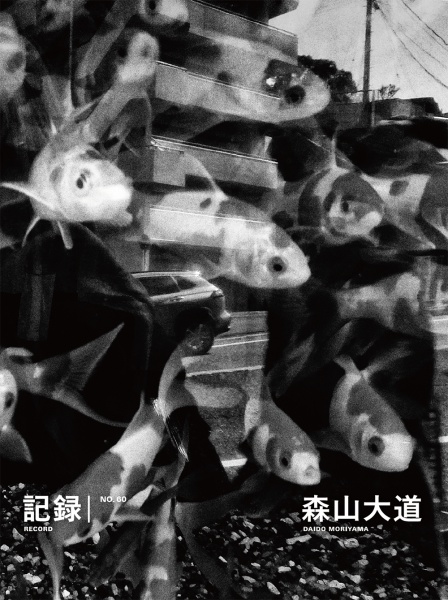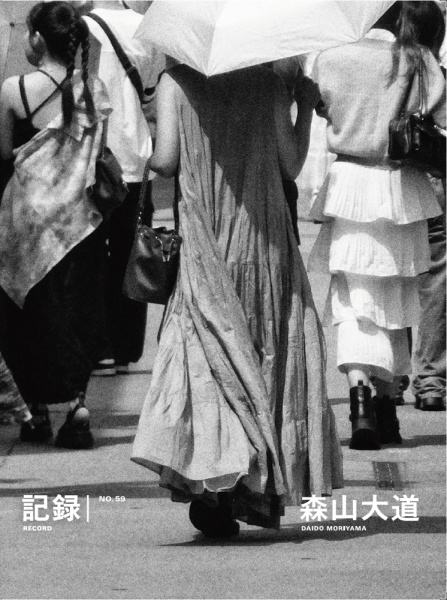Artist
Daido MORIYAMA
森山大道
Born 1938 in Osaka. After working as an assistant for photographers Takeji Iwamiya and Eikoh Hosoe, he went independent in 1964. He has been publishing his works in photography magazines among others, and received a New Artist Award from the Japan Photo Critics Association for Japan: A Photo Theater in 1967. Between 1968 and ’70 he was involved in the photo fanzine Provoke, and his style of grainy, high-contrast images that came to be referred to as “are, bure, boke” (grainy, blurry, out-of-focus) made an impact on the realm of photography. Solo shows at New York’s Metropolitan Museum of Art and the Fondation Cartier pour l'Art Contemporain in Paris solidified Moriyama’s worldwide reputation, and in 2012, he became the first Japanese to be awarded in the category of Lifetime Achievement at the 28th Annual Infinity Awards hosted by the International Center of Photography (ICP) in New York. The “William Klein + Daido Moriyama” exhibition together with William Klein at London’s Tate Modern in 2012-13 was a showdown of two immensely popular photographers that took the world by storm.
Publication

RECORD No.60
(...) Most of the images that I have been capturing in my photographs, have appeared in the journal “Record” over the twenty years from its launch up to this latest issue, No. 60. In other words, rather than a “Record,” one may actually understand it as my “ID” proper. In addition to the photos shot here in Japan, there are quite a few that I took in other countries, and with 120-180 pages each, each volume of this journal is very much a personal record and memento of my own life and memories.
Me, I will again be clicking away with my camera tomorrow, and the day after that. After all, photography is such a wonderful thing.
From afterwords by Daido Moriyama (a part)

RECORD No.59
(...) My own photo magazine Record is in its 19th year since relaunch, now getting to No. 59 in total.
It was at Café Huit on top of a building in the middle of Shinjuku that has long gone, where I received a strong request from Mr. Akio Nagasawa, the current publisher, to relaunch that handmade and privately pressed zine that had failed and folded after the 5th issue, some 30+ years earlier. “Come on Moriyama-san, keep putting that Record out! I will make it, let’s start right away!”
Those words, in that moment, revived my memories of the magazine that I had all but forgotten about, and all of a sudden I could see it right in front of me, shining in a bright new light. Without unnecessary ado, Mr. Nagasawa said “Okay, all you do is send me the photos you are taking these days, whenever you feel like it. Then we’ll just put them all in Record, and I won’t meddle with it.” For the next 19 years, most of the snapshots taken during the second half of my photographing life (except for the somewhat “commercial” stuff that sneaks in every now and then) have been collected in Record. Even the pictures that I brought home from travels and shootings abroad, ended up getting published in the form of one issue of Record. In other words, all of the myriad scenes of everyday life that I have captured with my camera in the later years of my life, have been converted into pages in that magazine, which means that everything in Record is a memory, a souvenir, a record in itself.
I really appreciate your enthusiasm, Mr. Nagasawa!
As long as my own spirits are high and my legs carry me, I will certainly keep on shooting.
From afterwords by Daido Moriyama (a part)

RECORD No.58
My daughter took me for a ride in her car the other day, and drove me to Yokohama. I hadn’t been there for quite a long time, so I was happy to roam the streets of Yokohama with my camera in my hand, always ready to shoot. We parked the car near Kannai Station, and after walking for a while, we arrived at Isezakicho. When I looked up, I noticed (the female singer) Mina Aoe smiling down at me from a giant billboard, and being happily reminded once again that I was in Yokohama, I took quite a few snapshots. That was when I caught sight of a group of cheerful girls parading on the other side of the street, which instantly had me clicking away to all sides. The streets were getting crowded, and seeing the skyscrapers of “Minatomirai” behind the buildings along the avenues, I couldn’t help but feel strongly impressed at how much Yokohama had changed.
Before – in fact quite a long time ago – I often made trips to Tokyo together with the photographer Takuma Nakahira, who was also living in Zushi back then. We would take a train on the Yokosuka Line, and then change to the Toyoko Line at Yokohama. But once we were at Yokohama, instead of jumping on the next train, it happened ever so often that we walked out of the station on a whim, down to the Sakuragicho area, and into a coffee shop where we would end up drinking coffee for hours. Even when I suggested walking around a bit more and taking photos in the neighborhood, Nakahira was only interested in the scenery around the port of Kawasaki at night, so over his coffee he just kept talking happily about things and people. like Godard, or the songs of Mina Mazzini, my favorite singer at the time.
When I think about it now, my only memories related to Yokohama are those of Nakahira shooting like crazy when the two of us eventually went to the port of Kawasaki at night, and then again at the time of his exhibition at the Yokohama Museum of Art.
The present cityscape of Yokohama has piqued my curiosity.
I guess I will continue going there every now and then, and take a bunch of photos.
– from afterwords by Daido Moriyama
